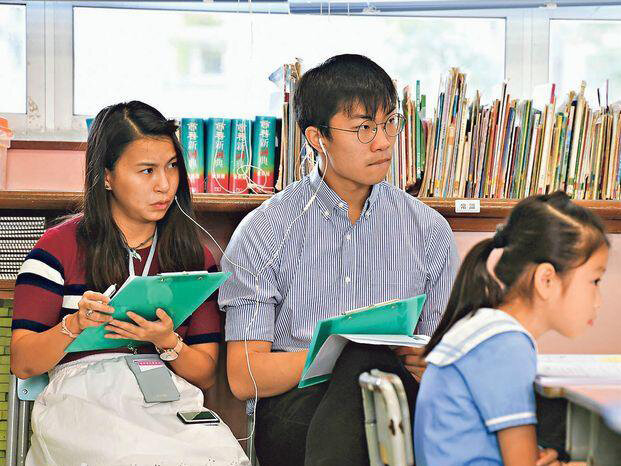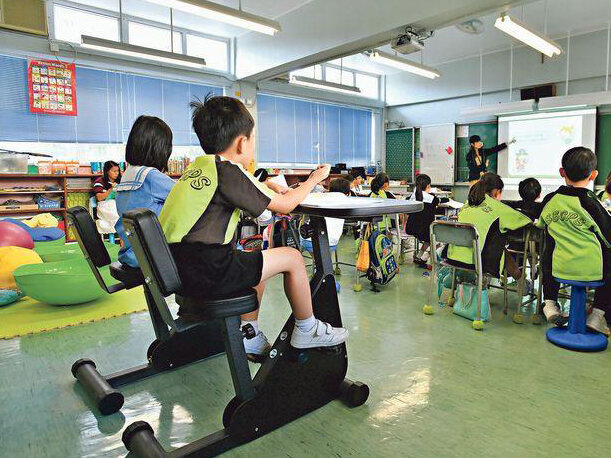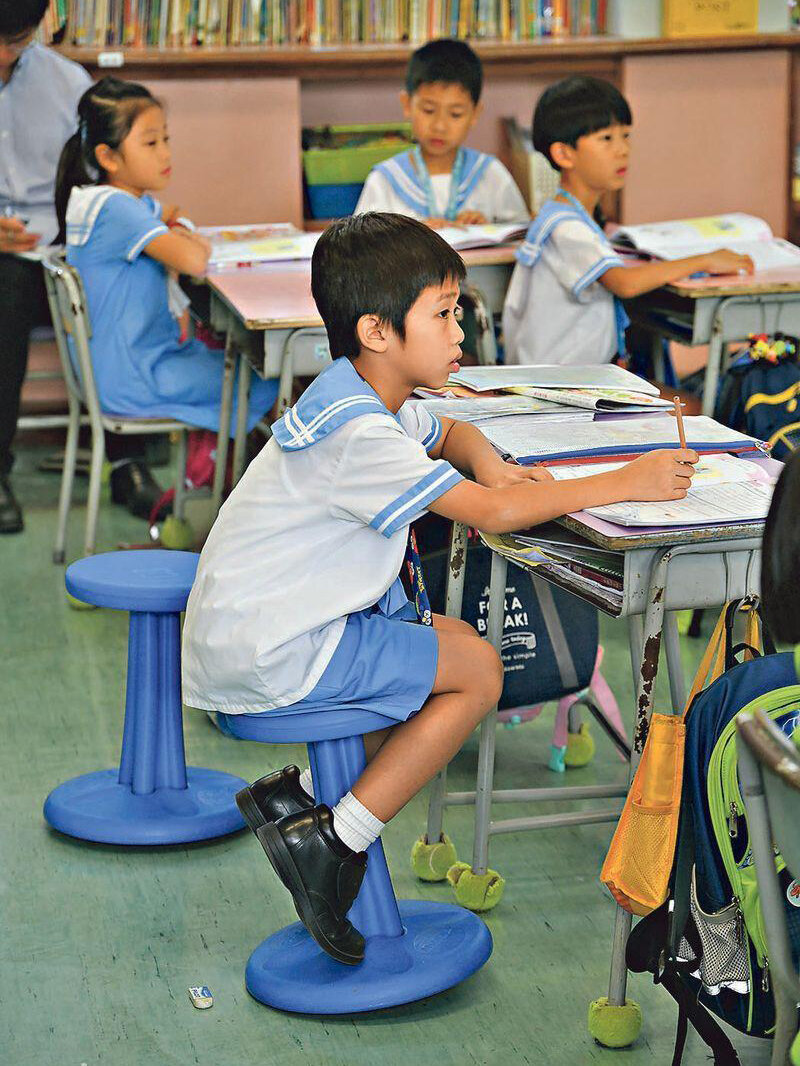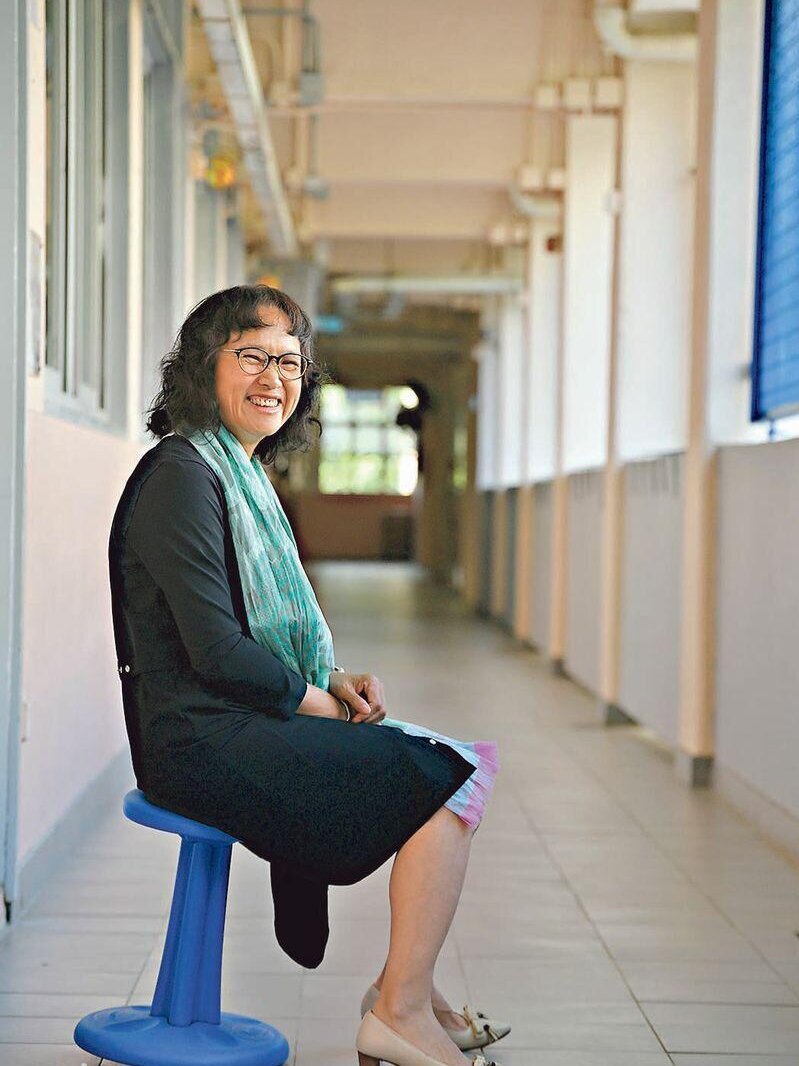Kinesthetic Classrooms in Hong Kong
We Have Always Been Told To Stay Seated During Classes. Contrary To Tradition, this Hong Kong Classroom Created An Atmosphere Of “Movement”
One Of The Masterminds Behind It Is None Other Than Natalie Cheung (Fellow 2018-20)
This article is originally published in Ming Pao. The excerpt above is an English abstract of the original Chinese article. Please click here for the original article.

Natalie’s student enjoying his reading session in one of the ABL Turtle Shells in their Kinesthetic Classroom
In recent years, many schools in Europe have been transforming ordinary classrooms into “Kinesthetic Classrooms.” Kinesthetic classrooms make use of a variety of props and teaching aids as well as flexible seats in the classroom. These flexible seats allow students to stand, kneel, jump, bounce, or even engage in movements activity like riding an exercise bike, students can sit in their most comfortable position and attend classes at ease.
Different Learning Mode: Moving Around Does Not Equal To Being Distracted
Kinesthetic classroom, a concept originated from the west, is first piloted in Hong Kong at St. Bonaventure Catholic Primary School.
“Traditionally, teachers are trained to get students to sit quietly and take classes. But this ignores the unique learning styles of each child,” said Principal Cheung Wai Ching of St. Bonaventure, “Some children can sit quietly and pay attention in class, but others must keep moving in order to be able to stay focused.”
Principal Cheung has always been hoping to break this dull situation. Coincidentally, Our Fellow, Natalie (Fellow 2018-20), learned of the research in Kinesthetic Classroom that American institutions have been conducting for nearly 20 years and it proved to be successful. Therefore, they introduced this innovative concept to the school during this school year.

Natalie and her team conducting research on the effectiveness of the Kinesthetic Classroom pilot
Re-Educating Students To “Move Around”
When we visited the "Kinesthetic classroom” that Natalie has constructed, the general layout was not much different from that of ordinary schools. But at the back of the classroom, two students are sitting on a Pedal Desk, working on their classwork while pedaling below. Five students were sitting on Wobble Chairs that wobbled like spinning tops. One took off his shoes and sat in a chair shaped like a turtle shell. He studied his textbook with ease, without a table in front.

Two students using the Pedal Desks during class
Natalie, the teacher in charge of this classroom as well, said that currently, seven students took turns to test the "flexible seats" every week, and data samples were collected during the period. “Moving is the nature of all children,” said Natalie, “Whether they have special education needs or not, allowing them to move will give their brains some energy boost while helping them concentrate and absorb better.”
Natalie said that at first, students were wary about these “flexible seatings”. She explained, “Because of conventions, teachers didn’t want their students to move around during classes. Therefore, I have to tell my students clearly that they can move freely when they sit on "flexible seats" as long as they do not disturb other students.“

One of Natalie’s students using the Wobble Chair
"These chairs are all designed by professionals and need to be quality assured by mechanics. Hence the prices are expensive. But because of the safety of our students, we don't want to use knockoff products. This pilot project is all sponsored by The Hong Kong Jockey Club Charities Trust,” said Principal Cheung.

Principal Cheung of St. Bonaventure Primary School creates a supportive environment that lay the groundwork for Kinesthetic Classroom



